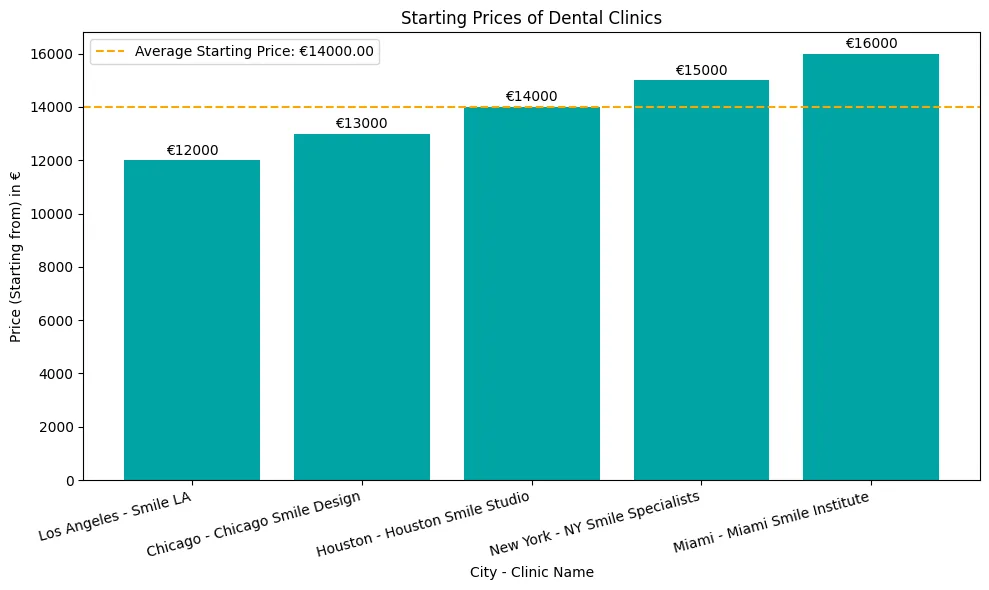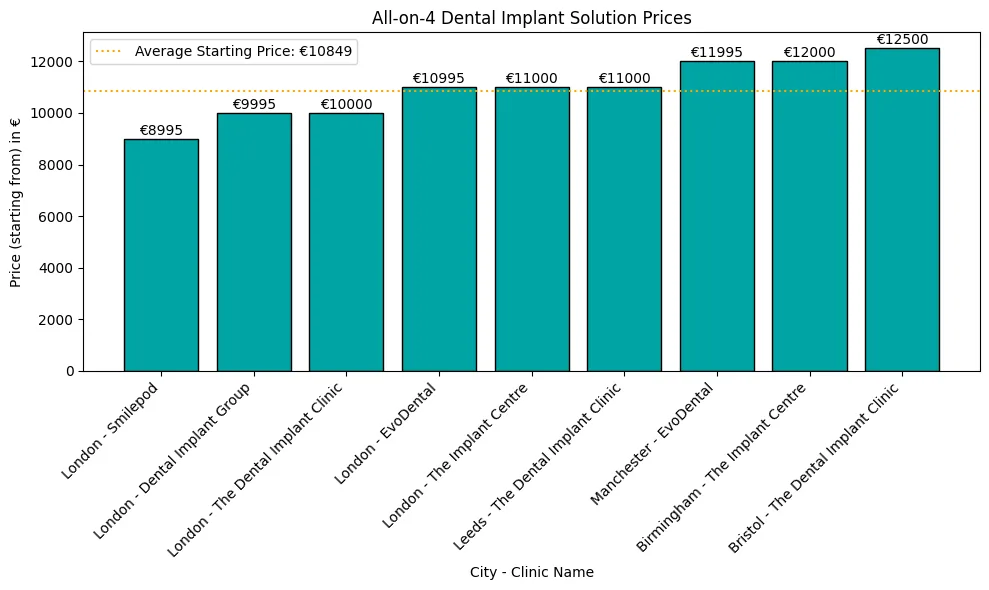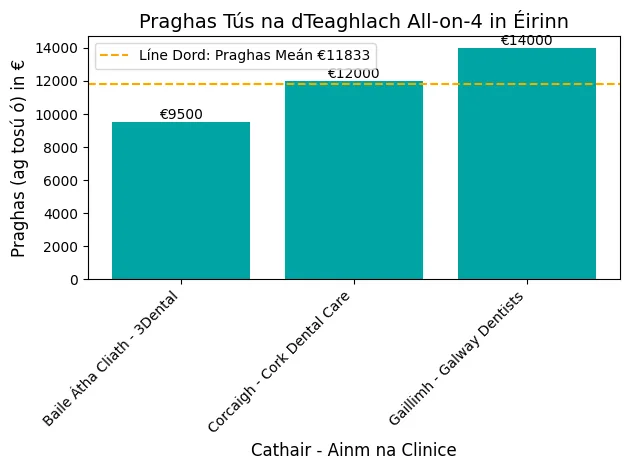Implantet dentare janë zgjidhja më e mirë për njerëzit që kërkojnë të rivendosin buzëqeshjen dhe besimin e tyre.
Por shumë po pyesin se cili është ndryshimi midis dhëmbëve të vetëm, dhëmbëve të shumtë dhe implanteve dentare me hark të plotë dhe cili është më i miri për ta.
Cili është ndryshimi midis implanteve dentare me një dhëmb të vetëm, dhëmbë të shumëfishtë dhe me hark të plotë?
Dallimi midis implant dentart llojet janë në zbatimin e tyre: Një dhëmbësh implantet zëvendësojnë dhëmbët që mungojnë individualisht me një shtyllë titani dhe kurorë. Dhëmbë të shumtë implantet përdorin disa shtylla ose ura për të zëvendësuar disa dhëmbë që mungojnë. Plot-hark implantet përdorin vendosjen strategjike të implantit për të mbështetur një rresht të tërë dhëmbësh protetikë.
| Lloji i implantit | Norma e suksesit | Periudha kohore |
|---|---|---|
| Një dhëmbësh | 95% | 10 vjet |
| Dhëmbët e shumëfishtë | 93% | 15 vjet |
| Full-Arch | 98% | 10 vjet |
Implantet dentare me një dhëmb
Përfitimet
Implantet dentare me një dhëmb janë zgjidhja për zëvendësimin e dhëmbëve individualë që mungojnë pa prekur dhëmbët e shëndetshëm fqinj.
Një nga avantazhet kryesore është ruajtja e densitetit të kockave të nofullës; implanti stimulon rritjen e kockave dhe parandalon humbjen e kockave, një problem i zakonshëm me protezat tradicionale.
Sipas një studimi, implantet me një dhëmb kanë një shkallë suksesi prej mbi 95% gjatë 10 viteve (1).
Procedura dhe funksionaliteti
Procedura për një implant dentar me një dhëmb është një proces me shumë hapa.
Së pari, një shtyllë titani vendoset në mënyrë kirurgjikale në kockën e nofullës; kjo do të jetë rrënja e dhëmbit të ri.
Ky post do të shkrihet me kockën përmes një procesi të quajtur osseointegrim; kjo zgjat disa muaj.
Pasi të integrohet, një mbështetëse ngjitet në shtyllë dhe një kurorë e bërë me porosi vendoset sipër; restaurimi ka përfunduar.
Kjo jo vetëm që do të rivendosë pamjen e dhëmbit natyral por edhe funksionin e tij; pacientët mund të përtypin dhe të flasin me lehtësi.
Dhe implantet me një dhëmb nuk kërkojnë mirëmbajtje të veçantë përtej higjienës së rregullt orale, kështu që është një opsion i përshtatshëm për shumë njerëz (2).
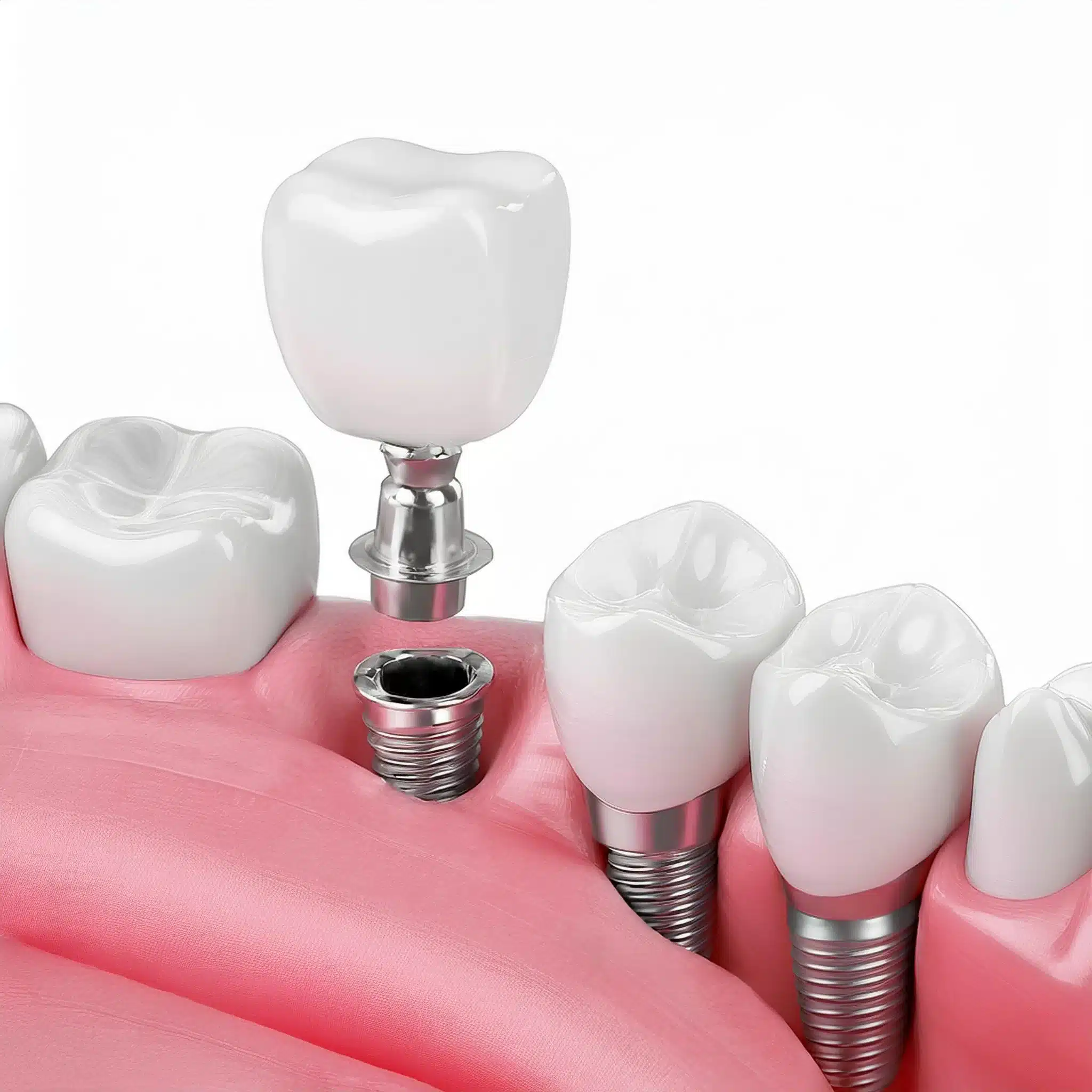
Implantet dentare me shumë dhëmbë
Përfitimet
Implantet dentare me shumë dhëmbë janë zgjidhja për pacientët që u mungojnë disa dhëmbë radhazi.
Ndryshe nga urat tradicionale, këto implante nuk mbështeten në dhëmbët ngjitur për mbështetje, kështu që dhëmbët përreth nuk janë të rrezikuar.
Një nga përfitimet më të mëdha është se ato shpërndajnë forcat e përtypjes në mënyrë të barabartë, pra më shumë rehati dhe funksionalitet.
Sipas një studimi, implantet e shumë dhëmbëve kanë një shkallë mbijetese prej 93% gjatë 15 viteve (3).
Llojet dhe procedura
Ka disa llojet i implanteve dentare me shumë dhëmbë, urave të mbështetura nga implantet dhe protezave të pjesshme.
Procedura fillon me një vlerësim gjithëpërfshirës dhe imazhe për të planifikuar vendosjen e implantit.
Qasjet moderne marrin parasysh Implantet Dentare me ngarkim të menjëhershëm kundër ngarkimit të vonuar, ku ngarkimi i menjëhershëm lejon lidhjen e përkohshme të protezës në të njëjtën ditë, ndërsa ngarkimi i vonuar ndjek periudhat tradicionale të shërimit.
Shtyllat e titanit futen në kockën e nofullës për të qenë spiranca për dhëmbët protezë.
Pas një periudhe shërimi ku ndodh osseointegrimi, një urë ose protezë e pjesshme i ngjitet implanteve.
Kjo jo vetëm që do të rivendosë buzëqeshjen, por gjithashtu do të parandalojë resorbimin e kockave dhe strukturën e fytyrës.
Pacientët do të përjetojnë një përmirësim të madh në efikasitetin e përtypjes dhe qartësinë e të folurit; kjo është arsyeja pse shumë preferojnë implantet e shumëfishta të dhëmbëve (4).
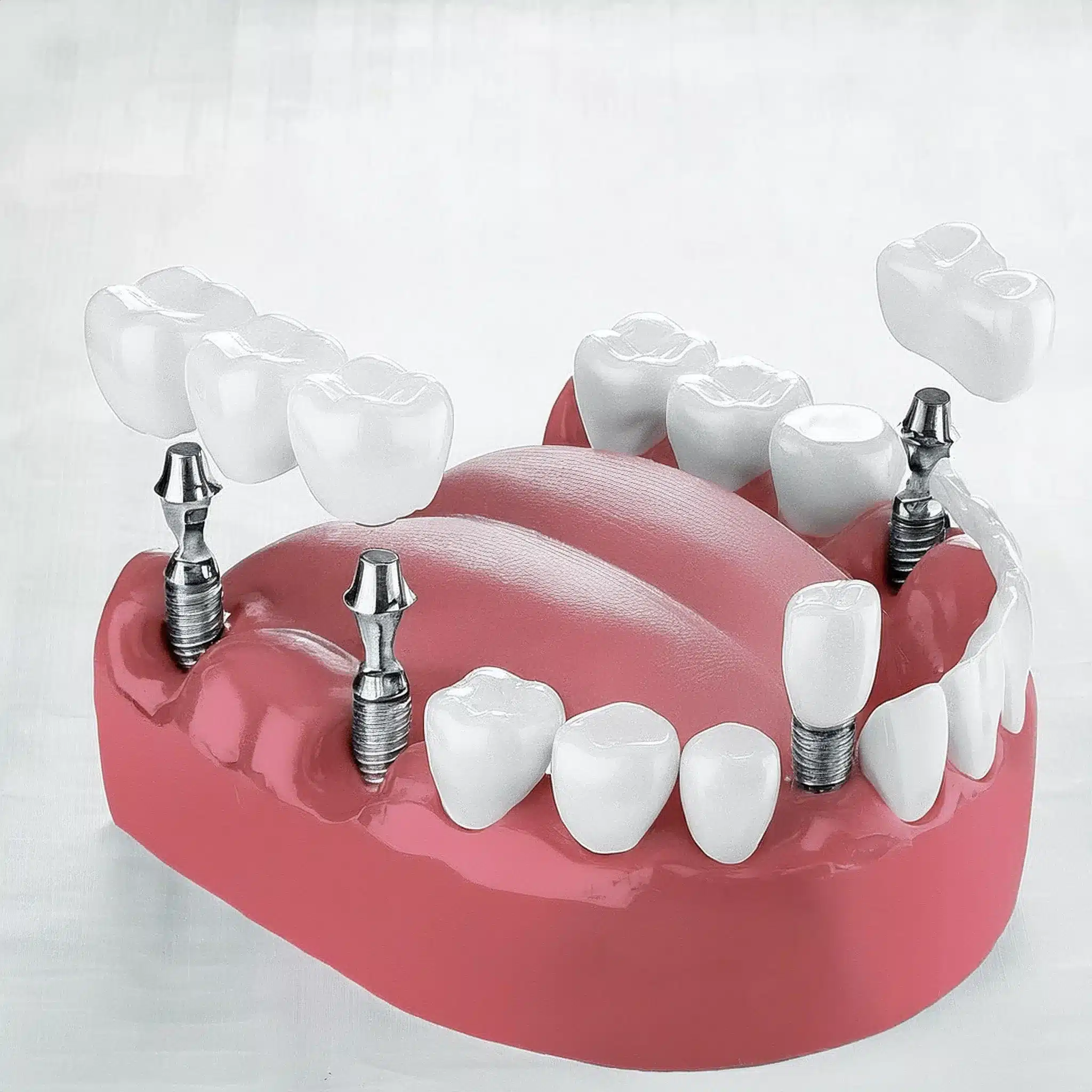
Implantet Dentare me hark të plotë
Përfitimet
Implantet dentare me hark të plotë janë zgjidhja për pacientët që kanë humbur shumicën ose të gjithë dhëmbët e tyre.
Ato ofrojnë një bazë të qëndrueshme dhe të sigurt për një grup të plotë dhëmbësh protetikë, duke përmirësuar cilësinë e jetës së pacientit.
Një nga përfitimet më të mëdha është funksionaliteti i plotë oral; pacientët mund të hanë, të flasin dhe të buzëqeshin me besim.
Implantet me hark të plotë parandalojnë gjithashtu humbjen e kockave, një problem i zakonshëm me protezat tradicionale.
Pacientët me implante me hark të plotë kanë një shkallë kënaqësie mbi 90% (5).
Llojet dhe procedura
Ekzistojnë disa lloje të implanteve dentare me hark të plotë: All-on-4 dhe All-on-6.
Këto përfshijnë vendosjen e 4 ose 6 implanteve në kockën e nofullës për të mbështetur një hark të plotë të dhëmbëve.
Procedura fillon me një ekzaminim gjithëpërfshirës dhe imazhe dixhitale për të planifikuar vendosjen e implantit.
Pas vendosjes së implanteve, vendoset një protezë e përkohshme, kështu që pacienti mund të funksionojë menjëherë.
Pas një periudhe shërimi ku implantet integrohen me kockën, vendoset një protezë e përhershme.
Kjo do të sigurojë një buzëqeshje me pamje natyrale dhe do të përmirësojë efikasitetin e përtypjes dhe të folurit.
Implantet me hark të plotë janë një zgjidhje afatgjatë, me një shkallë mbijetese deri në 98% për 10 vjet (6).
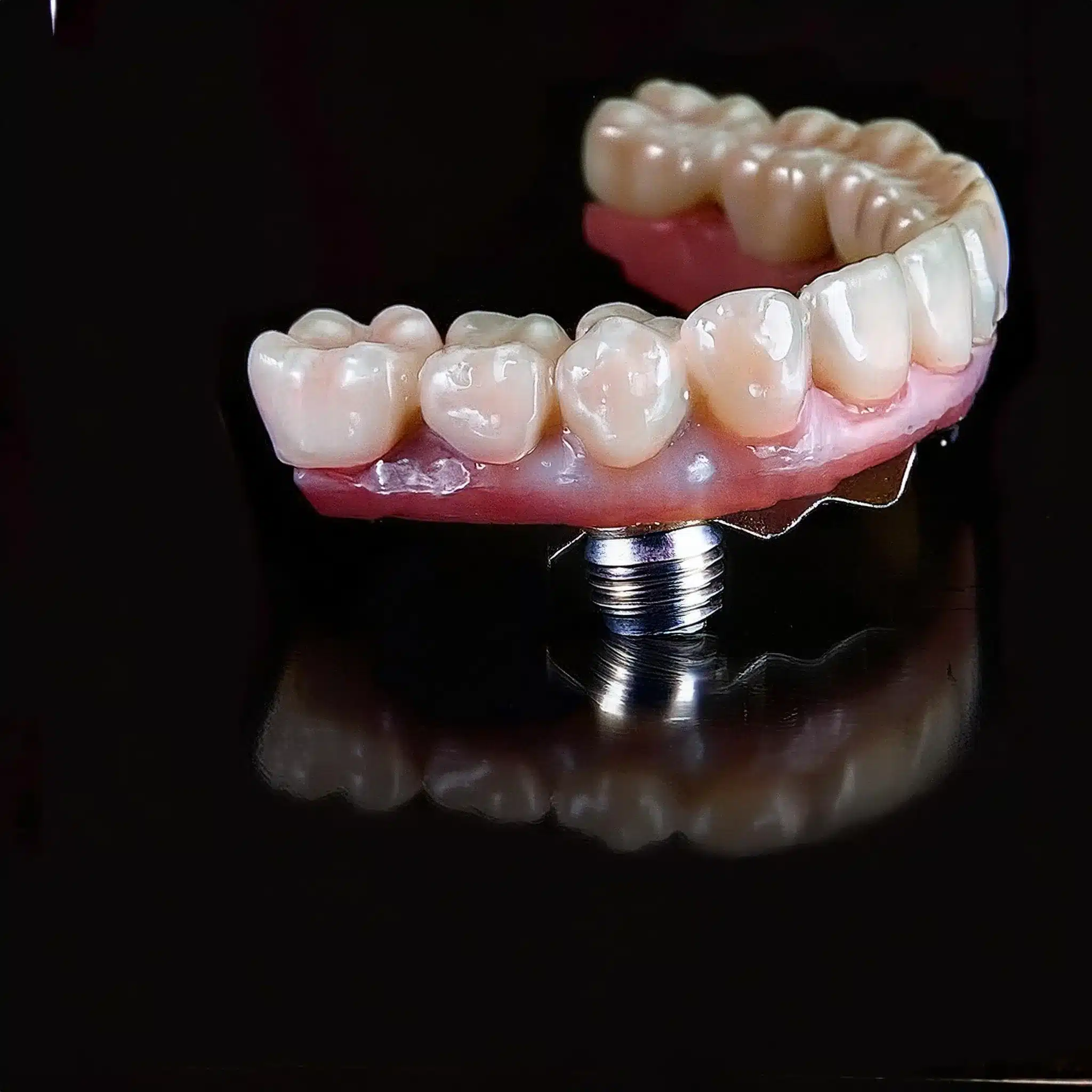
Cilin implant dentar të zgjidhni
Faktorët për t'u marrë parasysh
Zgjedhja e implantit të duhur dentar përfshin disa faktorë, duke përfshirë numrin e dhëmbëve që mungojnë, gjendjen e kockës së nofullës dhe shëndetin e përgjithshëm të pacientit.
Për shembull, pacientët me humbje të konsiderueshme të kockave mund të kenë nevojë për procedura shtesë si transplantimi i kockave përpara vendosjes së implantit.
Gjithashtu, kostoja e procedurës, e cila mund të variojë nga 500 euro në 5,000 euro për implant, është një konsideratë e madhe për shumë pacientë.
Një studim zbuloi se 75% pacientësh e konsideruan koston si një faktor kryesor në vendimmarrjen e tyre (5).
Shikoni një specialist
Shikimi me një specialist është i rëndësishëm për të përcaktuar se cili lloj i implantit dentar është më i miri për ju.
Një vlerësim gjithëpërfshirës, duke përfshirë imazhet dixhitale dhe ekzaminimin fizik, do të ndihmojë në vlerësimin e përshtatshmërisë së pacientit për lloje të ndryshme implantesh.
Specialistët mund të japin gjithashtu këshilla të personalizuara për opsionin më të mirë të trajtimit për nevojat dhe preferencat specifike të pacientit.
Pacientët që morën këshillim gjithëpërfshirës përpara operacionit të implantit raportuan një shkallë më të lartë kënaqësie me rezultatet e tyre (3).
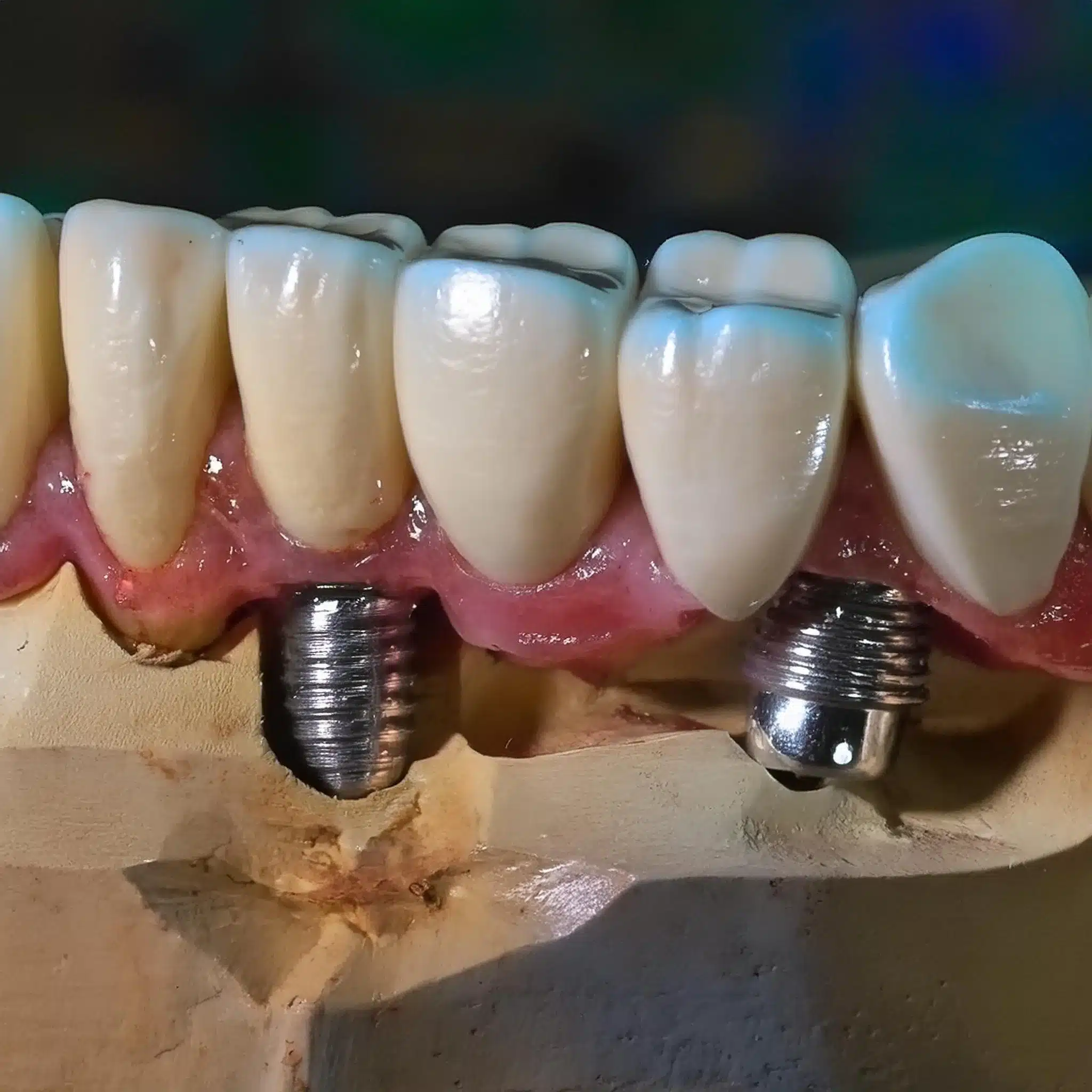
Përfundim & Çështje kryesore
Marrëdhëniet kryesore:
Implantet me një dhëmb për dhëmbët individualë që mungojnë pa prekur dhëmbët ngjitur, ruajnë densitetin kockor dhe kanë një shkallë të lartë suksesi me kalimin e kohës.
Implantet me shumë dhëmbë për disa dhëmbë që mungojnë, stabilitet dhe estetikë, një shkallë e mirë mbijetese dhe efikasitet i përmirësuar i përtypjes.
Implantet me hark të plotë për funksionim të plotë oral dhe strukturë të fytyrës, shkallë të lartë kënaqësie dhe qëndrueshmëri afatgjatë.
konkluzioni:
Zgjedhja e implantit të duhur dentar varet nga nevojat individuale, gjendja e kockave dhe shëndeti i përgjithshëm. Shikoni një specialist për të marrë këshilla të personalizuara dhe rezultatet më të mira për shëndetin tuaj dentar.
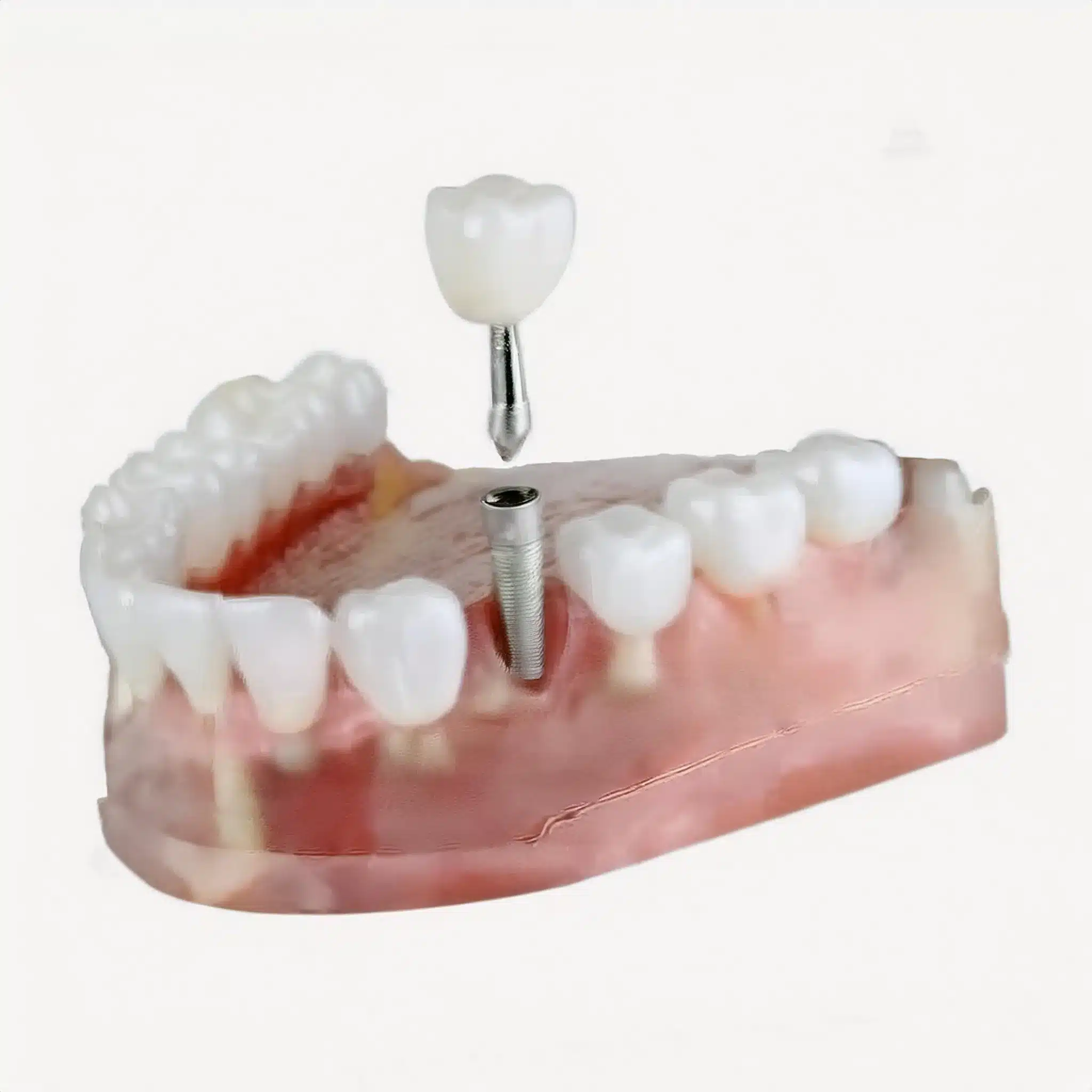
FAQ
Referencat
Blloko MS. Implantet Dentare: 100 vitet e fundit. J Oral Maxillofac Surg. 2018; 76 (1): 11-26.
Neni: Implantet Dentare: 100 vitet e fundit
Buser D, Sennerby L, De Bruyn H. Stomatologji moderne implantare e bazuar në osseointegrimin: 50 vjet progres, tendenca aktuale dhe pyetje të hapura. Periodontol 2000. 2017;73(1):7-21.
Neni: Stomatologji implantare moderne e bazuar në osseointegrim
Nevins M. Stomatologji implantuese: një evolucion i vazhdueshëm. Int J periodontics Dent restauruese. 2014;34 Suppl 3:s7.
Neni: Stomatologjia e implanteve: një evolucion i vazhdueshëm
O'Mahony A, Spencer P. Dështimet e implanteve të integruara me Osseo. J Ir Dent Assoc. 1999; 45 (2): 44-51.
Neni: Dështimet e implanteve të osteointegruara
Esposito M, Hirsch JM, Lekholm U, Thomsen P. Faktorët biologjikë që kontribuojnë në dështimet e implanteve orale të osseointegruara. (II). Etiopatogjeneza. Eur J Oral Sci. 1998; 106 (3): 721-64.
Neni: Faktorët biologjikë që kontribuojnë në dështimet e implanteve orale të osseointegruara
Diz P, Scully C, Sanz M. Implantet dentare në pacientin me probleme mjekësore. J Dent. 2013; 41 (3): 195-206.
Neni: Implantet dentare te pacienti i komprometuar nga ana mjekësore

